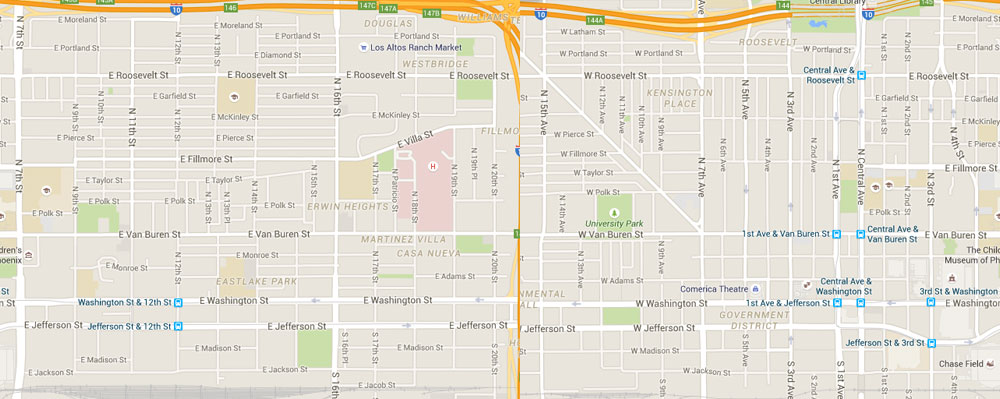
Your average website visitor is a tough nut to crack
Some are skittish, the slightest auto play sound or popup sending them scurrying. Others are skeptical. Even if you offer a great deal, they might think it’s simply too good to be true. Others simply take a long time choosing.
Converting customers requires a salient approach. Most digital marketers already understand the importance of paid search ads, social media, SEO content, website design specifically intended to improve SEO and all the rest. However, one area that gets overlooked more often than you’d think is the website itself.
Just like any marketing asset, your website and its user experience can be optimized. This means more than the UI and instead encourages you to consider the customer, their perspective, and how you can improve their overall experience. Let’s go over some methods for optimization.
1. Show Your Price (along with Taxes) Clearly
For some reason, some websites like to hide their prices. Big mistake, you need to display them. A consumer survey found that over 95% of respondents considered obvious and easy to find pricing (including shipping) as influential. Customers will not hunt around for prices and if you hide prices, they’ll assume it’s because you have something to hide.
Make sure that any discounts, taxes, shipping, or anything else that could affect the price are also displayed early in the shopping cart. If a customer adds a product that costs $50 to their cart, then reaches the final page and sees that the total cost is $65, they might abandon the product.
2. Offer Free Shipping
Customers HATE paying for shipping. They want to buy a product, not a shipping service. Of course, in the long run, a customer will always pay for shipping and handling. If nothing else, it will be priced into the product’s price itself. In fact, this might be the best route.
Make shipping free. Display it proudly. Let customers know that the price they see is what they are going to pay (plus taxes, if relevant). An eCommerce site might have to charge a bit more, but it’ll almost certainly be worth it. Another study found that 93% of customers would purchase more products if free shipping was involved.
Customers HATE paying for shipping, no surprise there. You'd be hard pressed to find someone who loves it. Click To Tweet3. Social Credibility Via Reviews and Ratings Are Vital
Customers won’t trust a website that proclaims their skincare product, camping gear, or whatever is the best. Every company will proclaim that their product is the “highest quality” or the “best value” or whatever. However, customers will trust other customers. If a customer leaves a good review, then future potential customers will see that as evidence that the product really is high-quality or a great value.
Studies have found that products that had reviews added to them saw their conversion rate surge by more than 35%. The more reviews, the better. Products with 20 reviews or more saw their conversion rate surge by nearly 85%.
4. Email Marketing Isn’t Just About the Inbox
Email marketing has fallen out of favor by some. However, it remains very effective. Click-through-rates, open rates, and all the rest have remained pretty consistent over the past few years. In the future, email marketing could become even more effective.
Why? Companies are increasingly integrating email marketing into social media. This creates a 1-2 punch. When email is coordinated with social media, and when both platforms are used to support one another, the results can be tremendous.
5. Visitors Want On-Demand Video
Video, when used the right way (meaning no auto play, among other things), can dramatically help increase engagement with visitors. Many website visitors simply don’t want to read blocks of text. They’d rather listen to and watch videos.
When Salesforce added an explainer video to its homepage, 30% of visitors watched the video, with 50% of watchers viewing the whole video. Better yet, Salesforce saw their conversion rates jump by 20%!
However, that doesn’t mean blasting visitors with auto play content that will fill up their speakers and headphones without permission. Such aggressive tactics could chase away your visitors. Put them in charge.
6. Live chat and chatbot features are great
Chat features make it easy for your website to interact with visitors but on their terms. If a customer has a question or concern, let them address it via a chat messenger program. This program can use chatbots to answer simple questions. Chatbots can also escalate difficult questions to human customer service reps. A bit of human touch and care can help ensure that customers are well taken care of and thus converted.
7. Offer Referral Discounts
It can be hard to drum up leads. Your best resource might be your best customers. Uber, Airbnb, and various other now giant companies used referral programs to encourage existing customers to invite friends to the platform. After a successful sign-up, the referrer was rewarded with a bonus, such as $20 credit.
This can be tremendously powerful for multiple reasons. First, if a customer is referring someone, they are basically offering their seal of approval. A referral is, in a sense, a recommendation. Second, if someone signs up you get a new customer AND the referral bonus will help increase your existing customer’s loyalty.
8. Make it Urgent
Urgency is a powerful tool for eCommerce. People are more likely to make a purchase if they are compelled to do so and compelled to do so within a specific amount of time. Offer a tremendous discount or another benefit but give people a limited amount of time to do so.
Perhaps you will limit the discount by time. Say “50% off for the next 13mins 52secs!” Or maybe you offer “25% off, only 5 items left at this price!” The point is, you offer a deal, but in exchange, the purchase must be made now.
9. If you use popups, use them on the exit
Many customers hate popups. No e-commerce shop should be blamed for avoiding popups as they can annoy customers. However, popups can be effective at drumming up conversions and gathering emails.
It’s possible to use an “exit popup”. The customer will only be shown the popup when they move to close out the tab. When they do so, you can send them a popup with an offer in exchange for an email address or purchase. For example, you might be offer “15% off your next purchase if you join our email list!”















